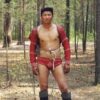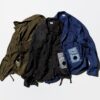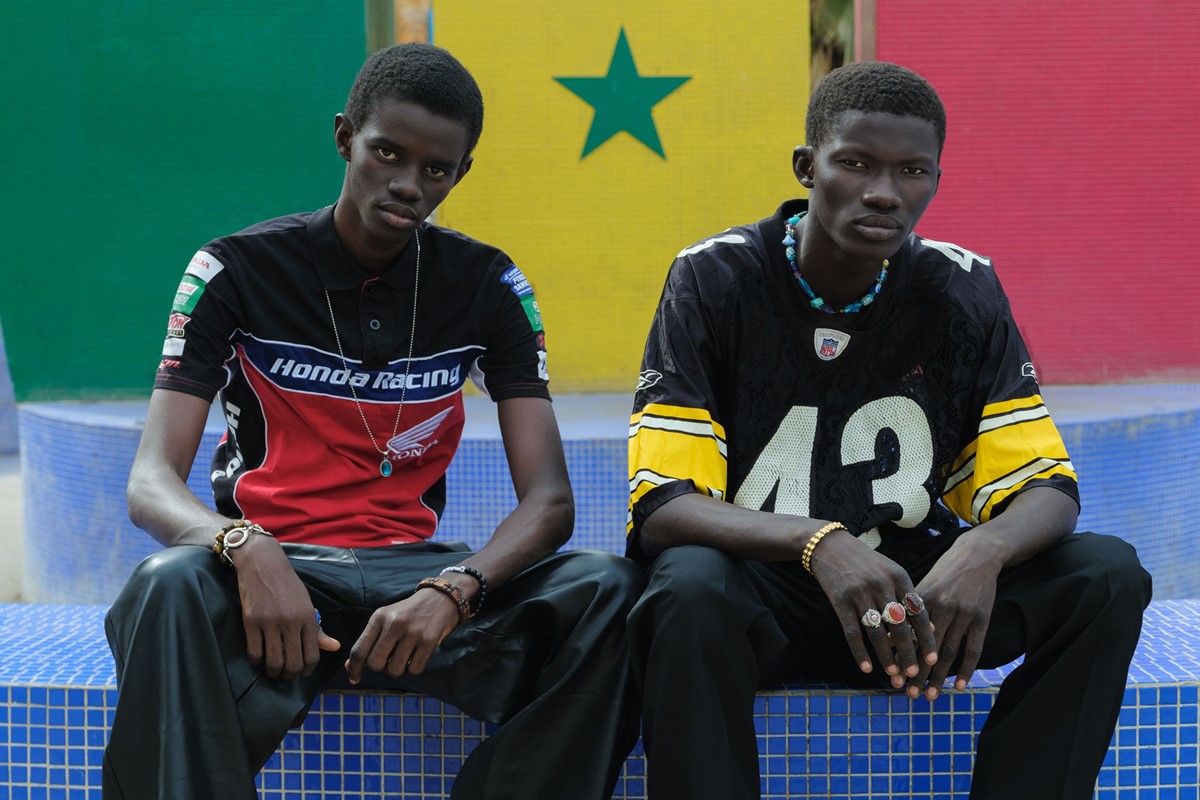
Rewrite
You may not need reminding of this simple fact, but fashion is obsessed with youth. Across the industry, young people dominate advertising, runways and editorials – but within those depictions, a white and Western worldview is often overrepresented. Despite the obvious reasons for that big picture, it’s all the more confounding when the rapidly aging populations of places like the US and UK are compared to countries like Senegal, whose under-35s make up a staggering 75 per cent of its people.
For these reasons, photographer William Rice and stylist Koura-Rosy Kane join forces on a new fashion shoot, spotlighting the vigour and energy of Senegal’s capital Darkar, using models Assane and Saliou as avatars for the country’s youth. Shot on the streets, beaches and markets of the capital city, the photographer and stylist worked together to convey both the natural beauty and vitality of the city, and teamed up with local brands to highlight Senegal’s often overlooked fashion scene. “At the shoot’s core, the message is that we don’t need to look elsewhere to create beauty,” says Kane. “Everything we need is right here in Dakar, just as legitimate and valuable as any international brand.”
Below, we speak to Rice and Kane about Senegalese fashion, shooting in the Plateau district of Dakar, and the damaging effect of unwanted Western clothing flooding Dakar’s markets.
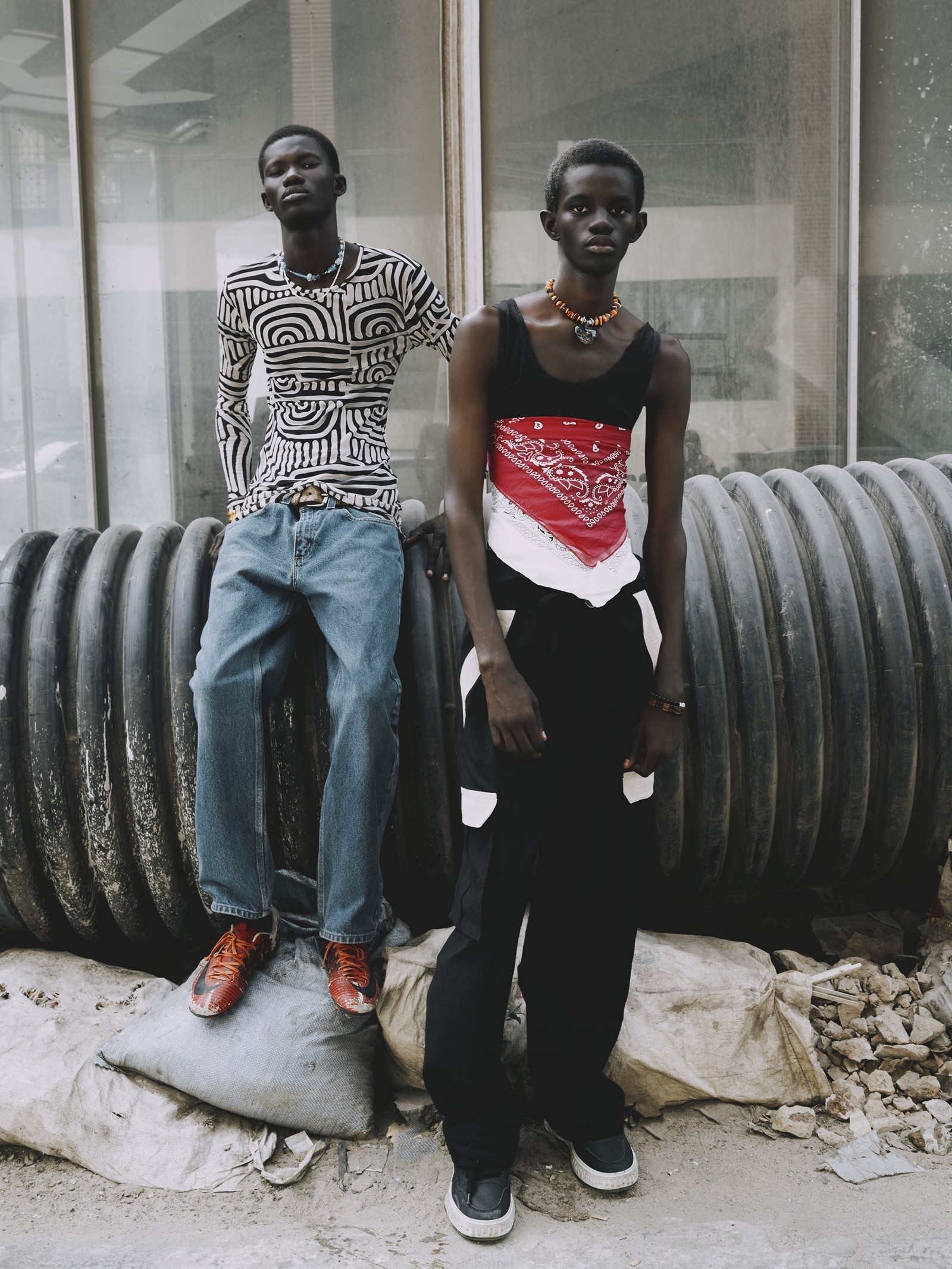
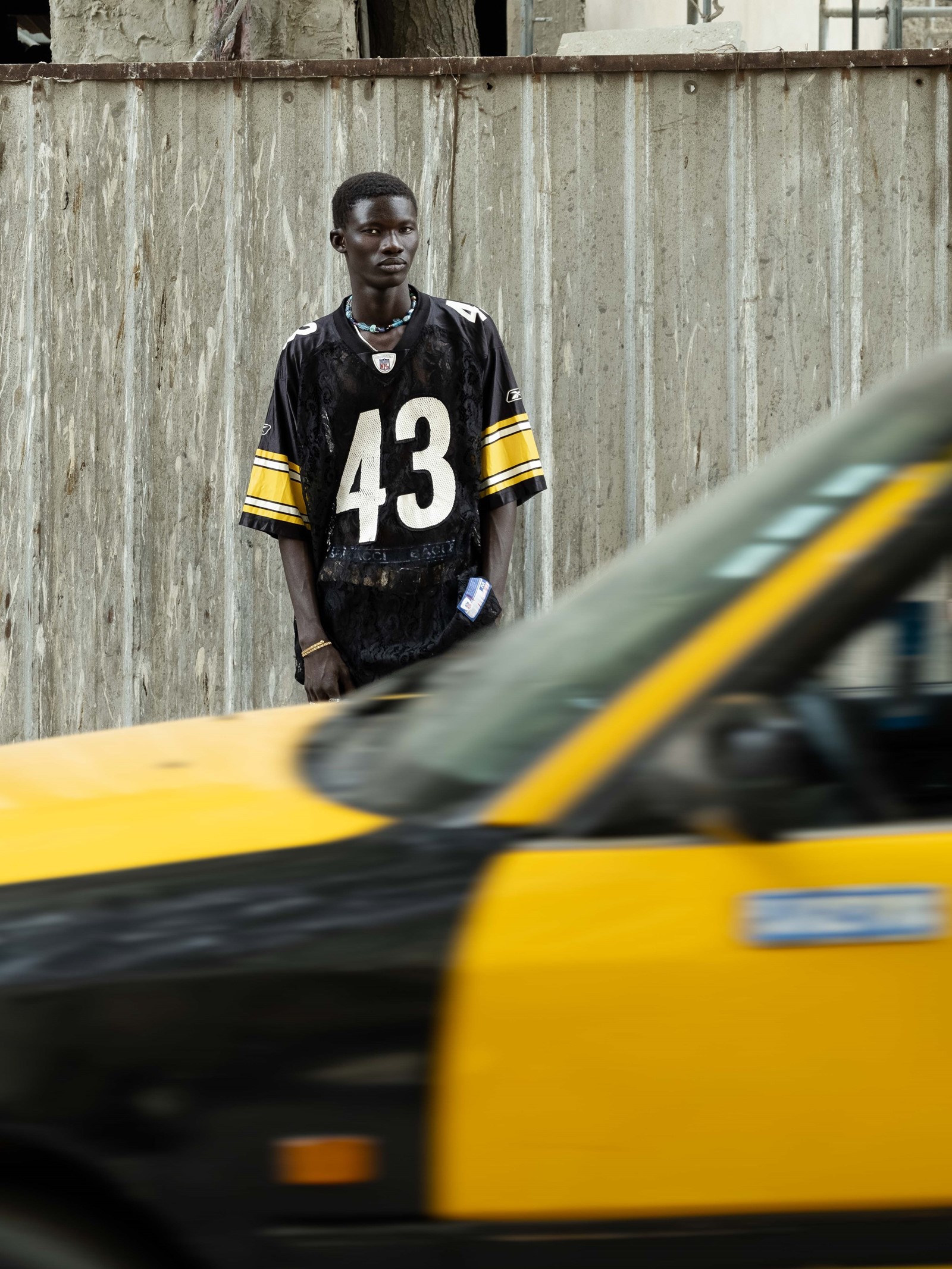
Hey William and Koura-Rosy – first of all, what was the initial inspiration for the shoot?
William Rice: The inspiration was Dakar itself and the people who give it life. I’ve been making photographs across West Africa for several years and have been fortunate to work in Dakar several times. Its natural beauty, history, creativity, youthfulness and overall life-force make for an inspiring mix that I wanted to reflect in these images.
In Dakar, you see fashion that has a distinct local flavour and is worn with a strong sense of individual expression. It’s really inspiring to see fashion that comes with a sense of place, and how the colours, shapes and textures connect with the local environment – it’s a breath of fresh air. I wanted the images to be a mix of documentary style photography and more composed personal imagery that would come together to make a vernacular study reflecting the energy of the city and its people.
Where are the photographs taken and why these particular locations?
William Rice: They were shot in the Plateau district of Dakar, which is the historical heart of the city. The area is a dream to photograph with its combination of old historical buildings, brand new development, 60s modernism, huge markets and beaches, all centred around Place de l’Indépendance. We were spoilt for choice when it came to finding interesting backdrops, colours and textures, so we mixed the street fashion with urban backdrops then shot the more intimate images on the beach.
“The boys were chosen because they were from the city and are new to modelling – they had a feeling of freshness and optimism I thought worked well in their hometown” – William Rice
Koura-Rosy Kane: For this editorial I focused on local brands and thrifted pieces sourced from Dakar’s markets. Each designer has a strong, distinct identity, yet they share a commitment to sustainability and the preservation of local savoir-faire, practices, and techniques.
For instance, Sokolata, a Dakar-based label founded by Sikoti Mbaitjongue, prioritises sustainable cotton and fabrics sourced exclusively from the African continent. The designer is committed to using only locally sourced materials, from textiles to zippers. Ateba Atelier is a slow-fashion label founded by Sylvie, specialising in crochet, a technique that requires meticulous craftsmanship and a commitment to sustainable, handmade production. Guiss Guiss is a secondhand brand specialising in customized pieces like the jerseys and upcycled necklaces in the shoot, while DECKI is an emerging pre-loved store dedicated to promoting sustainable practices within Senegal’s fashion industry.
Why did you choose these brands in particular?
Koura-Rosy Kane: The selection of designers and garments was made with the intention of showcasing local talent and the unique aesthetics shaping fashion in Dakar. Bringing together these distinct creative visions, we created these harmonious silhouettes that are entirely locally sourced. At the shoot’s core, the message is that we don’t need to look elsewhere to create beauty – everything we need is right here in Dakar, just as legitimate and valuable as any international brand.
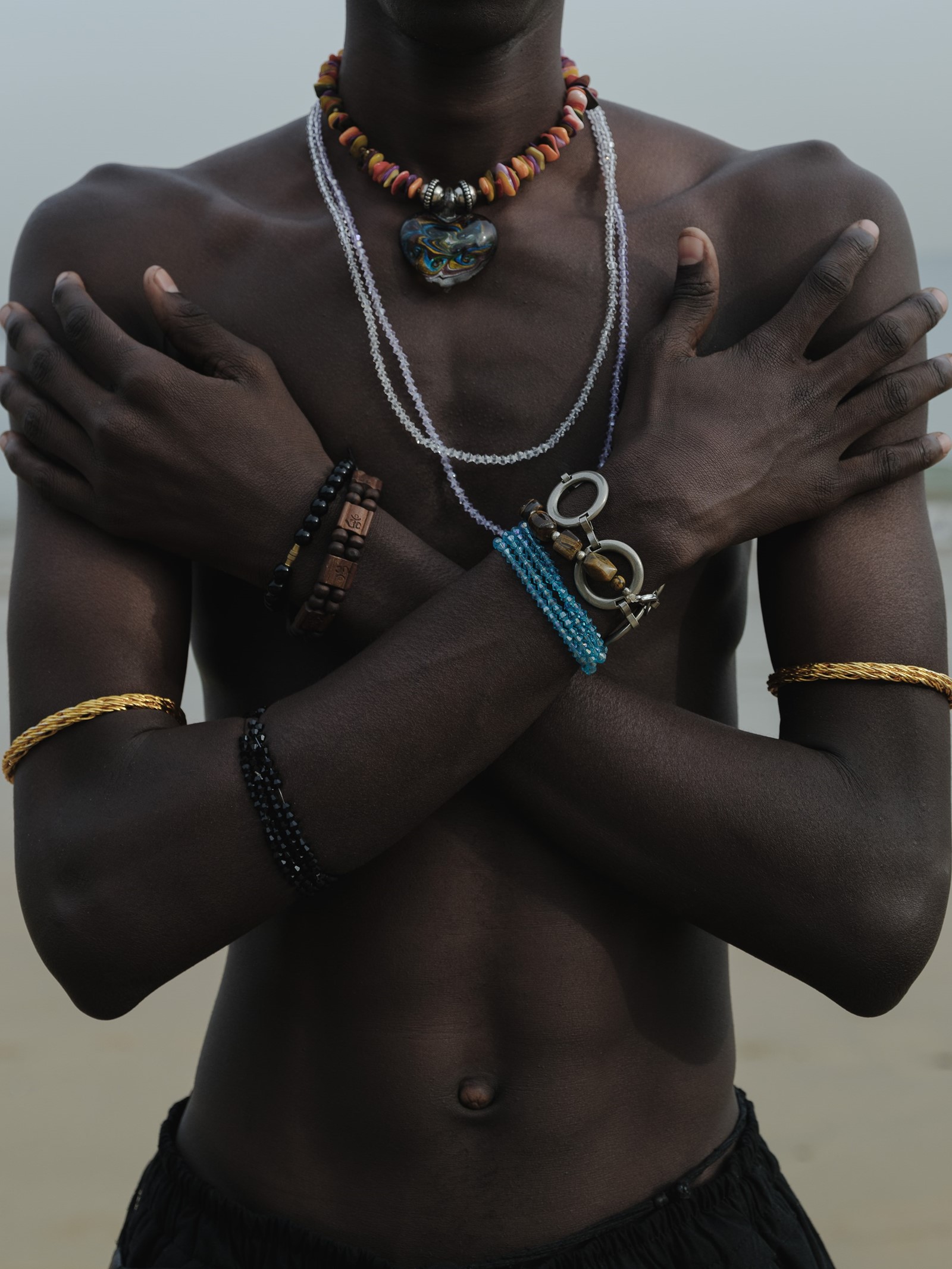
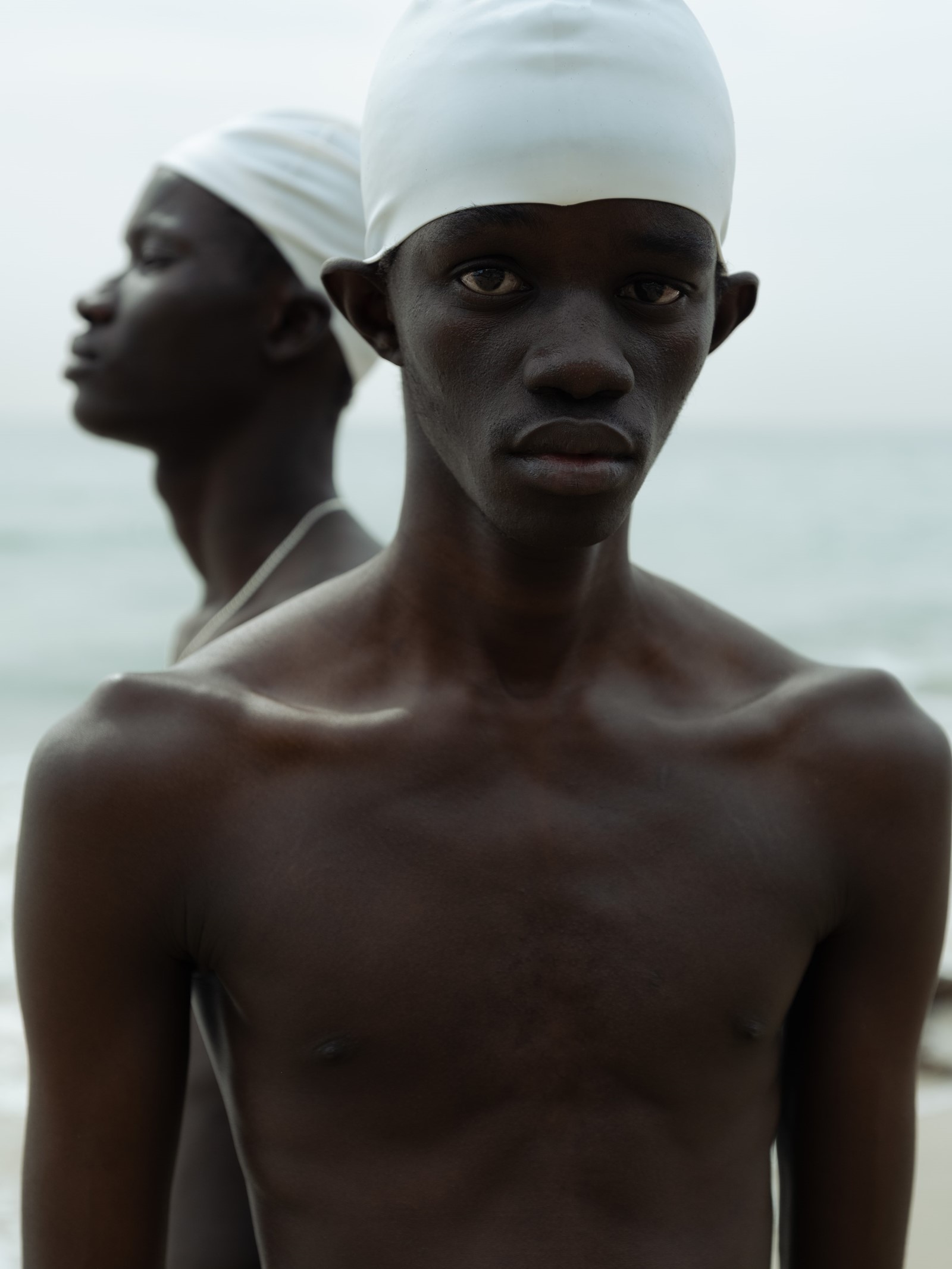
How did you go about casting the shoot?
William Rice: The two models are Assane and Saliou who were cast through Amy Management, a mother agency based in Dakar who scout and develop local talent. The boys were chosen because they were from the city and are new to modelling – they had a feeling of freshness and optimism I thought worked well in their hometown. They were super talented creatives who made the shoot a total joy. They’ve actually already been signed to agencies in Paris – it’s wonderful to see the rest of the world recognise new Senegalese talent.
75 per cent of Senegal’s population is under 35 – how do the images represent Senegalese youth?
William Rice: I think Assane and Saliou are great examples of young people in Senegal. They’re creative, confident, optimistic, ambitious and proud of their environment. They represent the new, as does Koura-Rosy’s styling, which feels very expressive of Dakar’s young energy.
Koura-Rosy Kane: As William mentioned, the styling was designed to embody youth culture and its impact on Senegalese society. With this predominantly young population, youth play a crucial role in shaping social dynamics, creative fields, and cultural expression. Unlike Western countries with aging demographics, Senegal’s youthful population continuously influences local culture, fashion and visual storytelling.
“Dominant fashion narratives often minimise or stigmatise the secondhand market, shaping perceptions in Africa as well” – Koura-Rosy Kane
Senegal is facing environmental issues due to unwanted Western donations – how did you weave that into the shoot?
Koura-Rosy Kane: Every year, increasing amounts of deadstock flood West African markets. While Ghana is often highlighted, Dakar markets are filled with discarded clothing from the Global North – primarily Europe and the US. I spend a lot of time in these markets, studying the origins of the garments and analysing their impact on local fashion and creative industries. Recently, more African governments are regulating the influx of textile waste which will significantly impact the fashion landscape. Uganda set a precedent by banning imported clothing waste a few years ago, and Senegal is introducing its own regulations now.
For this editorial, it was essential to incorporate thrifted pieces, such as shoes and accessories, as they are deeply embedded in local aesthetics and everyday fashion, particularly among youth. Dominant fashion narratives often minimise or stigmatise the secondhand market, shaping perceptions in Africa as well. Through the shoot, I wanted to challenge these perspectives by integrating secondhand pieces into a high fashion, aesthetically driven context. This approach is central to my styling work, as I want to deconstruct outdated narratives and highlight the value of thrift within contemporary fashion.
What was the idea behind the colour grading in the market photos? The primary colours seem to pop while everything else is more muted.
William Rice: It was a cloudy day in Dakar when we shot – apparently there had been a wind storm the night before that brought in dust from the Sahara, so the light was beautiful, hazy and soft. A total dream to shoot in and, yes, quite muted. The colour grading was designed to bring out the clothes in the street images and then softened on the beach images to create a more cinematic and emotional feeling, inspired in part by the beach scenes in the Senegalese film Atlantics. I also wanted to do justice to all the detail and different textures in Koura-Rosy’s work.
Scroll through the gallery at the top of the page to see the entire Dakar shoot.
in HTML format, including tags, to make it appealing and easy to read for Japanese-speaking readers aged 20 to 40 interested in fashion. Organize the content with appropriate headings and subheadings (h1, h2, h3, h4, h5, h6), translating all text, including headings, into Japanese. Retain any existing
tags from
You may not need reminding of this simple fact, but fashion is obsessed with youth. Across the industry, young people dominate advertising, runways and editorials – but within those depictions, a white and Western worldview is often overrepresented. Despite the obvious reasons for that big picture, it’s all the more confounding when the rapidly aging populations of places like the US and UK are compared to countries like Senegal, whose under-35s make up a staggering 75 per cent of its people.
For these reasons, photographer William Rice and stylist Koura-Rosy Kane join forces on a new fashion shoot, spotlighting the vigour and energy of Senegal’s capital Darkar, using models Assane and Saliou as avatars for the country’s youth. Shot on the streets, beaches and markets of the capital city, the photographer and stylist worked together to convey both the natural beauty and vitality of the city, and teamed up with local brands to highlight Senegal’s often overlooked fashion scene. “At the shoot’s core, the message is that we don’t need to look elsewhere to create beauty,” says Kane. “Everything we need is right here in Dakar, just as legitimate and valuable as any international brand.”
Below, we speak to Rice and Kane about Senegalese fashion, shooting in the Plateau district of Dakar, and the damaging effect of unwanted Western clothing flooding Dakar’s markets.


Hey William and Koura-Rosy – first of all, what was the initial inspiration for the shoot?
William Rice: The inspiration was Dakar itself and the people who give it life. I’ve been making photographs across West Africa for several years and have been fortunate to work in Dakar several times. Its natural beauty, history, creativity, youthfulness and overall life-force make for an inspiring mix that I wanted to reflect in these images.
In Dakar, you see fashion that has a distinct local flavour and is worn with a strong sense of individual expression. It’s really inspiring to see fashion that comes with a sense of place, and how the colours, shapes and textures connect with the local environment – it’s a breath of fresh air. I wanted the images to be a mix of documentary style photography and more composed personal imagery that would come together to make a vernacular study reflecting the energy of the city and its people.
Where are the photographs taken and why these particular locations?
William Rice: They were shot in the Plateau district of Dakar, which is the historical heart of the city. The area is a dream to photograph with its combination of old historical buildings, brand new development, 60s modernism, huge markets and beaches, all centred around Place de l’Indépendance. We were spoilt for choice when it came to finding interesting backdrops, colours and textures, so we mixed the street fashion with urban backdrops then shot the more intimate images on the beach.
“The boys were chosen because they were from the city and are new to modelling – they had a feeling of freshness and optimism I thought worked well in their hometown” – William Rice
Koura-Rosy Kane: For this editorial I focused on local brands and thrifted pieces sourced from Dakar’s markets. Each designer has a strong, distinct identity, yet they share a commitment to sustainability and the preservation of local savoir-faire, practices, and techniques.
For instance, Sokolata, a Dakar-based label founded by Sikoti Mbaitjongue, prioritises sustainable cotton and fabrics sourced exclusively from the African continent. The designer is committed to using only locally sourced materials, from textiles to zippers. Ateba Atelier is a slow-fashion label founded by Sylvie, specialising in crochet, a technique that requires meticulous craftsmanship and a commitment to sustainable, handmade production. Guiss Guiss is a secondhand brand specialising in customized pieces like the jerseys and upcycled necklaces in the shoot, while DECKI is an emerging pre-loved store dedicated to promoting sustainable practices within Senegal’s fashion industry.
Why did you choose these brands in particular?
Koura-Rosy Kane: The selection of designers and garments was made with the intention of showcasing local talent and the unique aesthetics shaping fashion in Dakar. Bringing together these distinct creative visions, we created these harmonious silhouettes that are entirely locally sourced. At the shoot’s core, the message is that we don’t need to look elsewhere to create beauty – everything we need is right here in Dakar, just as legitimate and valuable as any international brand.


How did you go about casting the shoot?
William Rice: The two models are Assane and Saliou who were cast through Amy Management, a mother agency based in Dakar who scout and develop local talent. The boys were chosen because they were from the city and are new to modelling – they had a feeling of freshness and optimism I thought worked well in their hometown. They were super talented creatives who made the shoot a total joy. They’ve actually already been signed to agencies in Paris – it’s wonderful to see the rest of the world recognise new Senegalese talent.
75 per cent of Senegal’s population is under 35 – how do the images represent Senegalese youth?
William Rice: I think Assane and Saliou are great examples of young people in Senegal. They’re creative, confident, optimistic, ambitious and proud of their environment. They represent the new, as does Koura-Rosy’s styling, which feels very expressive of Dakar’s young energy.
Koura-Rosy Kane: As William mentioned, the styling was designed to embody youth culture and its impact on Senegalese society. With this predominantly young population, youth play a crucial role in shaping social dynamics, creative fields, and cultural expression. Unlike Western countries with aging demographics, Senegal’s youthful population continuously influences local culture, fashion and visual storytelling.
“Dominant fashion narratives often minimise or stigmatise the secondhand market, shaping perceptions in Africa as well” – Koura-Rosy Kane
Senegal is facing environmental issues due to unwanted Western donations – how did you weave that into the shoot?
Koura-Rosy Kane: Every year, increasing amounts of deadstock flood West African markets. While Ghana is often highlighted, Dakar markets are filled with discarded clothing from the Global North – primarily Europe and the US. I spend a lot of time in these markets, studying the origins of the garments and analysing their impact on local fashion and creative industries. Recently, more African governments are regulating the influx of textile waste which will significantly impact the fashion landscape. Uganda set a precedent by banning imported clothing waste a few years ago, and Senegal is introducing its own regulations now.
For this editorial, it was essential to incorporate thrifted pieces, such as shoes and accessories, as they are deeply embedded in local aesthetics and everyday fashion, particularly among youth. Dominant fashion narratives often minimise or stigmatise the secondhand market, shaping perceptions in Africa as well. Through the shoot, I wanted to challenge these perspectives by integrating secondhand pieces into a high fashion, aesthetically driven context. This approach is central to my styling work, as I want to deconstruct outdated narratives and highlight the value of thrift within contemporary fashion.
What was the idea behind the colour grading in the market photos? The primary colours seem to pop while everything else is more muted.
William Rice: It was a cloudy day in Dakar when we shot – apparently there had been a wind storm the night before that brought in dust from the Sahara, so the light was beautiful, hazy and soft. A total dream to shoot in and, yes, quite muted. The colour grading was designed to bring out the clothes in the street images and then softened on the beach images to create a more cinematic and emotional feeling, inspired in part by the beach scenes in the Senegalese film Atlantics. I also wanted to do justice to all the detail and different textures in Koura-Rosy’s work.
Scroll through the gallery at the top of the page to see the entire Dakar shoot.
and integrate them seamlessly into the new content without adding new tags. Ensure the new content is fashion-related, written entirely in Japanese, and approximately 1500 words. Conclude with a “結論” section and a well-formatted “よくある質問” section. Avoid including an introduction or a note explaining the process.
